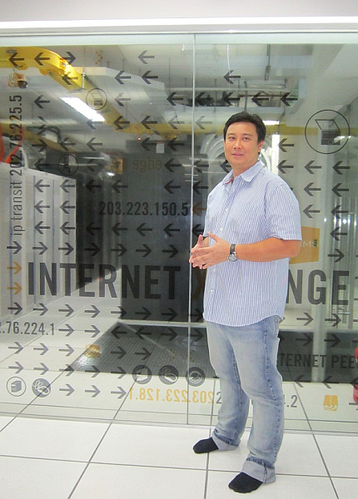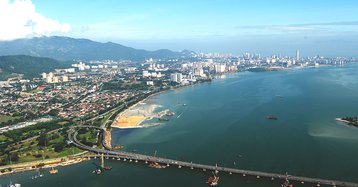When we last wrote about Malaysia in “Creating a new data center market”, we pointed to how increasing demand and new government initiatives to help drive a new outsourcing industry. A year has passed since, and while developments are certainly taking place at a faster clip than most other countries in the region, it is slower in comparison to the data center hubs of Singapore and Hong Kong.
New plans are afoot, however, to set Malaysia on track as a data center hub. We take a closer look at the Malaysia data center market and examine the initiatives being put in place to give its data centers a significant boost.
Why isn’t Malaysia already a data center hub?
When DCD spoke with AIMS group chief executive officer Chiew Kok Hin, he was quick to concede that while Malaysia has always sought to position itself as a global data center hub, that it is lags countries in the region such as Hong Kong, Japan and Singapore due to them having started “much earlier”.
Yet there is certainly much going for the country, as Chiew ticked off various advantages throughout our conversation, including the competitive cost of power in Malaysia, ready access to skilled employees, cheaper access to land and lower construction cost compared to Singapore and Hong Kong.
Many of Chiew’s points were separately echoed by Ho Yee Chung, director of engineering division and operations division, NTT MSC, a fully owned subsidiary of NTT Communications that operates four data centers in Malaysia.
“At present, Malaysia is one of the best locations in terms of the infrastructure stability in a region with low risk for natural disaster,” said Ho. “In terms of operation support, Malaysia has established mature education ground for knowledge development with a ready pool of talented resources. Operation costs are not at the high side with the advantages of average salary and reasonable power tariff.”
So why has it taken so long?
With so many clear advantages, why isn’t Malaysia a data center hub yet? Chin Jun Fwu, research manager, Datacenter and Virtualization, IDC Asia Pacific highlighted two crucial factors that have a heavy influence where demand is concerned.
“Being nearer to the customer base is a key concern. Most of the regional players are based in [Singapore and Hong Kong],” said Chin to DCD. According to him, this is the reason why operators and businesses continue to set up new data centers in these countries despite the real estate challenges and higher costs.
“The advantage here is being near to the customer, and secondly bandwidth,” he said. Chin was alluding to the cost of connectivity, which according to a recent IDC study showed as an area where Malaysian data centers spend about 20 to 25 percent of their operational budgets. In contrasts, data centers at other locations such as Singapore, Hong Kong, the United Kingdom and the United States attribute just five percent of their operational cost on connectivity.
Lowering the cost of connectivity
Given that attracting more MNCs and regional businesses looking to expand in the region is something not within the control of data center operators, this leaves the cost of connectivity as an area to tackle. “We see connectivity as one of the stumbling block in terms of getting people set up in data centers in Malaysia. That is where the inter-DC network is being established,” said Chiew.
Chiew was referring to the creation of a high-speed backbone to link data centers within the city of Cyberjaya. As we reported last month, AIMS was appointed by the influential Multimedia Development Corporation (MDeC) to build the network after it won an open tender for it. The strategy behind this Government-backed plan is to bring down the cost of connectivity within the country by creating high-speed links between data centers.
For now, Phase 1 is scheduled to be completed end-June, and will see six multi-tenanted data centers within Cyberjaya connected via the network. While work on Phase 2 will depend on the results of Phase 1, Chiew told us that deliberations on that front has already started–and will essentially entail extending the inter-DC network out of Cyberjaya to other parts of the country.
I’m sure that we are able to give Singapore and Hong Kong a run for their money
Chiew Kok Hin
To underscore the cost savings that the inter-DC network initiative can bring about, Chiew highlighted how a 10 gigabit connection can cost as much as $35,000 Ringgit (US$9,700) per month based on rates offered by the local telecommunication operators. In contrast, the same connectivity routed via the inter-DC network will cost just $7,000 Ringgit (US$1,940), or one fifth of the former option.
For now, Chiew said that there is already “a couple of customers” confirmed to date, as well as ongoing discussions on the possibility of integrating this network to the Malaysian Internet Exchange (MyIX) network.
“The ultimate objective is to bring cost down to the lowest possible, to encourage more people to host in the data center, [and encourage] data center to data center recovery,” he explained.
Turning the tables on Singapore
Another ace that Malaysia has up its sleeve may well be the Iskandar Malaysia development corridor in the State of Johor, located just across the causeway from Singapore. It has been earmarked for the establishment of a second hub for data center parks in the country, and among others, recently saw Telekom Malaysia announcing its plans to build a $38 million data center in the Nusajaya Tech Park there.
With the operating costs in countries such as Singapore unlikely to ease any time soon, Iskandar may prove to be an enticing alternative for organizations looking for a cheaper location for disaster recovery purposes or as a backup data center.
“Iskandar is definitely positioned that way. As the geographical boundary becomes blurred, it doesn’t really matter where the data center [is located]; it doesn’t matter if a backup data center is sitting in Iskandar versus Singapore,” said Chin in response to our query.
According to him, cloud providers such as Amazon Web Services (AWS) and Microsoft Azure has already demonstrated a model of accessing compute infrastructure across borders that works. Specifically, data centers are established by AWS and Microsoft in various hubs around the world, with points of presence set up in regional locations that feed straight back to the infrastructure.
There are concerns over data sovereignty
But what of concerns about data sovereignty, given that a backup data center will necessitate a copy of data being kept at that location? “The concern is more live in local companies and financial institutions than regional companies,” Chin pointed out–after all, multinational companies and regional companies already have their data spread over multiple countries by default.
On his part, Chiew conceded that AIMS does have customers who have a primary data center in Singapore and relies on its facilities for disaster recovery. However, he said that things are changing as organizations start to see the value of establishing their primary data centers in Malaysia, with Singapore serving as the backup location.
“There were certain things that we did not do well, such as connectivity. With the [inter-DC initiative] being realized, I’m sure that we are able to give Singapore and Hong Kong a run for the money,” said Chiew. “I think it is time for us to let the world know that Malaysia will emerge as a strong contender for data centers. There will be a couple of interesting news coming along, so watch the space.”



